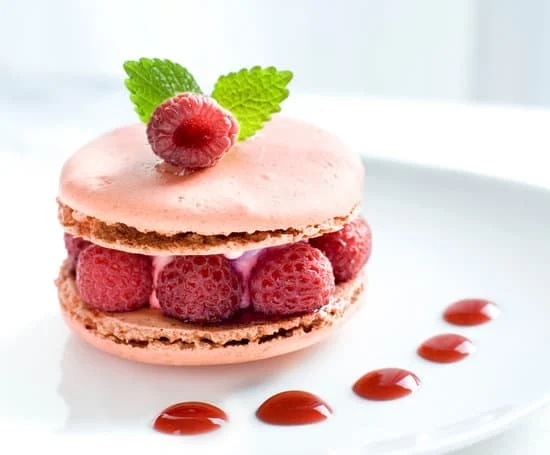Smooth icing is not only visually appealing, but also plays a crucial role in elevating the overall appearance of cakes. The art of cake decoration often hinges on achieving a flawlessly smooth surface, as it provides a pristine canvas for further creativity and embellishment. Whether it’s a simple birthday cake or an intricately designed wedding masterpiece, smooth icing sets the stage for stunning decorations that leave a lasting impression on both visual and taste buds.
Smooth icing serves as the foundation for any cake design, creating a polished and professional finish. It acts as a clean backdrop to showcase intricate patterns, vibrant colors, and eye-catching designs. Without a smooth icing base, even the most beautiful decorations can appear dull or inconsistent. Mastering the technique of achieving perfectly smooth icing is therefore essential for any aspiring cake decorator or home baker looking to take their creations to the next level.
While there are various methods and techniques for achieving a smooth finish, it is important to understand the different types of icing that lend themselves well to this endeavor. From buttercream to fondant to glaze, each type has its own unique attributes in terms of texture and ease of application. By exploring these options and understanding their pros and cons, you can choose the best frosting for achieving your desired smoothness.
Types of Icing Ideal for Creating a Smooth Finish
Smooth icing is an essential element in cake decoration, as it greatly enhances the overall appearance of cakes. Achieving a perfectly smooth finish can take your cake from ordinary to extraordinary. There are several types of icing that are ideal for creating a smooth finish, each with its own pros and cons.
One popular type of icing for achieving a smooth texture is buttercream. Buttercream is made by combining butter or shortening with powdered sugar and flavorings. It is known for its smooth and creamy consistency, which makes it easy to work with.
Buttercream is also versatile as it can be easily colored and flavored to match any theme or taste preference. However, one challenge with buttercream is that it can be sensitive to temperature changes, leading to potential issues like melting or air bubbles.
Fondant is another type of icing commonly used for creating a smooth finish on cakes. Fondant is a pliable sugar paste that can be rolled out and draped over cakes for a flawless look. It provides a sleek and polished appearance and allows for sharp edges on cake designs.
Fondant also offers the advantage of being able to hold intricate details and decorations well. However, working with fondant requires some practice and skill, as it can be sticky and difficult to handle at first.
A third option for achieving a smooth finish is ganache. Ganache is made by heating cream and pouring it over chocolate, resulting in a rich and glossy mixture. When cooled, ganache has a thick yet smooth consistency that spreads easily over cakes. It gives cakes a luxurious texture and appearance while providing stability to delicate designs. The downside of using ganache for smoothing cakes is that it solidifies quickly, making it challenging to work with if not handled promptly.
| Type | Pros | Cons |
|---|---|---|
| Buttercream | Smooth and creamy texture, versatile for coloring and flavoring | Sensitive to temperature changes, potential melting or air bubbles |
| Fondant | Sleek and polished appearance, holds intricate details well | Requires practice and skill to work with, can be sticky and difficult to handle |
| Ganache | Rich and glossy texture, provides stability to delicate designs | Quickly solidifies, challenging to work with if not handled promptly |
Techniques for Achieving a Smooth Icing Finish
Creating a flawlessly smooth icing finish on cakes is an essential skill for any cake decorator. It gives cakes a polished and professional look, making them even more appealing to the eyes. In this section, we will explore step-by-step techniques that can help you achieve the perfect smooth icing finish and some useful tips and tricks for beginner decorators.
- Crumb Coating: Before applying the final layer of icing, it is crucial to crumb coat the cake. This involves applying a thin layer of icing to seal in any crumbs and create a smooth base for the final layer of icing.
To crumb coat, start by adding a generous amount of icing on top of the cake and slowly work your way down the sides, filling in any gaps or uneven areas with additional icing. Use an offset spatula or bench scraper to spread the icing evenly and remove any excess. - Viva Paper Towel Method: One popular technique for achieving a perfectly smooth icing finish is known as the Viva paper towel method. After applying the final layer of buttercream or ganache, allow it to crust slightly.
Then, take a clean sheet of Viva paper towel (other brands may have textures that leave impressions) and gently press it onto the surface of the cake using your hand or fondant smoother. Slowly peel off the paper towel, revealing a smooth surface free from any imperfections. - Hot Knife Method: Another effective technique for achieving a smooth finish is using a hot knife. Heat up a knife blade by running it under hot water, then wipe away any excess water before gently gliding it over the surface of the cake in long, even strokes. The heat from the knife helps melt and smooth out any uneven areas or air bubbles in the icing.
These techniques may require some practice to master but are worth investing time into honing your skills as they can greatly enhance the overall appearance of your cake. Remember to be patient and take your time as rushing can result in a less-than-perfect finish. Keep in mind that different types of icing may require slightly different techniques, so it’s important to experiment and see what works best for you.
| Technique | Description |
|---|---|
| Crumb Coating | Applying a thin layer of icing to seal in crumbs and create a smooth base for the final layer of icing. |
| Viva Paper Towel Method | Gently pressing a clean sheet of Viva paper towel onto the cake’s surface to achieve a smooth finish. |
| Hot Knife Method | Gliding a heated knife blade over the cake to melt and smooth out any imperfections in the icing. |
Incorporating these techniques into your cake decorating repertoire will elevate your skills and allow you to create cakes that are sure to impress. With practice, patience, and these helpful tips, you’ll be on your way to achieving picture-perfect smooth icing finishes on all your cakes.
Essential Tools for Creating Smooth Icing Decorations
Smooth icing decorations require specific tools to achieve a flawless finish. These tools not only help in applying the icing smoothly but also assist in creating intricate designs and patterns. Here are some essential tools that every cake decorator should have for creating smooth icing decorations:
Icing Smoother
An icing smoother is a must-have tool for achieving a perfectly smooth surface on your cake. It is typically made of food-safe plastic or metal and has a flat edge that helps smooth out any bumps or imperfections in the icing. To use an icing smoother, simply hold it against the side of the cake and gently run it around the edges, gradually moving towards the center. This tool ensures a professional-looking finish with clean lines.
Offset Spatula
An offset spatula is another essential tool for creating smooth icing decorations. This tool has a long, narrow blade with a slight bend at the handle, which makes it easier to reach the edges and corners of the cake. The offset spatula is perfect for spreading and smoothing icing, especially on larger cakes. Use it to apply an even layer of frosting onto your cake before using an icing smoother to create a super-smooth surface.
Piping Bags and Tips
Piping bags and tips are indispensable tools for adding decorative elements to your smoothly iced cakes. Disposable or reusable piping bags can be filled with colored buttercream or royal icing, allowing you to pipe intricate patterns, flowers, borders, or lettering on top of your cakes. Various tips can be attached to the piping bag for different effects such as ruffles, rosettes, stars, or even writing.
Palette Knife
A palette knife is a versatile tool that can be used for multiple purposes when working with smooth icing decorations. Its flexible blade allows you to easily spread and blend colors on your cake, creating beautiful gradients and ombré effects. Additionally, a palette knife can be used to lift and transfer delicate decorations onto the cake without damaging them.
By investing in these essential tools, you will be well-equipped to create smooth icing decorations that are both aesthetically pleasing and visually impressive. Each tool plays a specific role in achieving a flawless finish and adding intricate designs to your cakes. With practice and experimentation, you will soon master the art of creating picture-perfect cakes using smooth icing.
Troubleshooting Common Challenges with Smooth Icing
Creating a perfectly smooth icing surface on cakes can be quite challenging, even for experienced bakers. Air bubbles, cracks, and uneven surfaces are some of the common challenges that can arise when trying to achieve a flawlessly smooth finish. However, with a few simple techniques and tricks, these obstacles can be overcome.
One common issue that many cake decorators face is the presence of air bubbles in their icing. These pesky bubbles can create unsightly bumps or holes on the surface of the cake. To fix this problem, here are some steps you can take:
- Puncture the bubble: Use a toothpick or a small pin to gently pop the air bubble from the surface of the icing.
- Smooth it out: Once the bubble is popped, use an offset spatula or a cake smoother to gently smooth out any indentation left behind by the bubble.
- Avoid over-mixing: Another way to prevent air bubbles is to avoid over-mixing your icing. When incorporating air into your frosting, mix at a low speed and only until everything is just combined.
Cracks in the icing can also be a frustrating obstacle when aiming for a smooth finish. Here are some tips to fix cracked icing:
- Patch it up: If you notice any cracks on your cake’s surface after applying the initial layer of icing, simply fill in the cracks with more frosting using an offset spatula.
- Chill and reapply: Sometimes, cracks occur due to temperature changes or insufficient chilling time between layers of icing. Pop your cake in the fridge for 10-15 minutes before adding another layer of frosting to give it more stability.
Uneven surfaces are another challenge that can disrupt your quest for smooth icing. Here’s what you can do to tackle this issue:
- Leveling the cake: Start by ensuring that your cake layers are level before applying any icing. Use a serrated knife or a cake leveler to trim off any domed tops.
- Crumb coat: Apply a thin layer of icing, known as a crumb coat, all over the cake and let it set in the refrigerator for about 15 minutes. This will help seal in any loose crumbs and create a smooth base for your final layer of icing.
- Viva paper towel method: To achieve an ultra-smooth finish, you can gently press a piece of Viva paper towel against the surface of the cake after applying the final layer of icing. Smooth out any imperfections by gently rubbing the paper towel in circular motions.
With these troubleshooting techniques, you can overcome common challenges and achieve a beautifully smooth icing finish on your cakes. Remember that practice makes perfect, so don’t be discouraged if it doesn’t turn out perfectly on your first try. Keep experimenting and refining your skills, and soon you’ll become a master at creating picture-perfect cake decorations with smooth icing.
Incorporating Colors and Designs Into Smooth Icing Decorations
Creating a smooth icing surface is just the first step in cake decoration. Once you have achieved a flawlessly smooth finish, it’s time to add colors and designs to make your cake truly stand out. There are different methods that you can use to incorporate colors and designs into your smoothly iced cakes.
One popular method is using food coloring gels or paste to tint the icing. These concentrated forms of coloring offer vibrant and intense colors without altering the texture of the icing. To achieve a solid color, simply add a small amount of gel or paste to your icing and mix well until you reach the desired hue. If you want to create multiple colors, divide your icing into separate bowls and add the respective colors to each bowl.
Another technique for incorporating colors into smooth icing decorations is by using piping bags and tips. By attaching different tips to your piping bag, you can create various patterns and designs on your cake. For example, a round tip can be used for creating dots or writing, while a star tip can create rosettes or borders. Experiment with different tips and techniques to find your favorite design styles.
To take your smooth icing decorations to the next level, consider using advanced techniques such as gradients or ombré effects. To achieve a gradient effect, mix two colors of icing together gradually from dark to light before filling your piping bag. This will create a beautiful transition of colors when piped onto the cake. Likewise, for an ombré effect, pipe different shades of the same color side by side in a horizontal or vertical pattern.
Remember, practice makes perfect when it comes to incorporating colors and designs into smooth icing decorations. Don’t be afraid to experiment with different techniques and try out new ideas. With time and practice, you’ll develop your own unique style that will impress everyone who sees your beautifully decorated cakes.
- Use food coloring gels or paste to tint the icing.
- Divide the icing into separate bowls to create multiple colors.
- Attach different tips to your piping bag to create various patterns and designs.
- Experiment with gradients and ombré effects for a more advanced look.
Decorating Ideas and Inspirations Utilizing Smooth Icing
Smooth icing is not just about achieving a flawless finish on cakes, but it also opens up a world of creative possibilities for cake decoration. With smooth icing as your canvas, you can create stunning and visually appealing designs that will leave everyone in awe. In this section, we will explore some decorating ideas and inspirations that utilize smooth icing to elevate your cake decorations to the next level.
Intricate Patterns
One way to showcase the beauty of smooth icing is by incorporating intricate patterns into your cake design. This can be achieved by using edible stencils or templates made from parchment paper. By placing the stencil or template on top of the cake and carefully applying contrasting colors of smooth icing over it, you can create beautiful patterns such as lace, chevron, or damask designs.
Gradients and Ombré Effects
Smooth icing provides an excellent base for creating gradients and ombré effects on cakes. To achieve a gradient effect, start with a darker shade of icing at the bottom and gradually transition to a lighter shade as you move upward on the cake. For an ombré effect, use different shades of the same color and blend them seamlessly together. This technique adds dimension and depth to your cake decorations.
Sculpted Details
Smooth icing can be used to enhance sculpted details on cakes by creating realistic textures such as wood grain, fur, or fabric folds. By using specialized tools like texture combs or fondant molds, you can add lifelike elements to your smooth icing surfaces. Whether it’s creating bark-like textures on a tree stump cake or adding flower petals with delicate veins, these sculpted details will take your cake decorations to another level.
Edible Artwork
Smooth icing is like a blank canvas waiting for your artistic touch. You can create edible artwork on cakes by using food-safe paints or food coloring pens directly on the smooth surface. This allows you to draw intricate designs, write personalized messages, or even recreate famous paintings. The possibilities are endless, and it’s a great way to showcase your creativity and personalized touch.
Whether you’re a beginner or an experienced cake decorator, incorporating these ideas into your cake decorations using smooth icing will surely impress your friends and family. Remember, practice makes perfect, so don’t be afraid to experiment and try new techniques. With smooth icing as your foundation, you have the power to create picture-perfect masterpieces that will make any occasion extra special.
Expert Advice and Insights from Professional Cake Decorators
Professional cake decorators have mastered the art of creating smooth icing decorations, and their expertise can provide valuable insights and advice to aspiring bakers. These professionals have spent years perfecting their skills and have accumulated a wealth of knowledge on using smooth icing to create picture-perfect cake designs.
One piece of expert advice that professional cake decorators often emphasize is the importance of starting with a well-prepared base. Before applying any icing, it is crucial to ensure that the cake is level and has been properly crumb coated.
Crumb coating involves applying a thin layer of icing to seal in any loose crumbs, ensuring a smooth surface for the final coat. Professional decorators recommend chilling the crumb-coated cake for at least 15 minutes before applying the final layer of icing.
Another insight shared by experts is the significance of using the right tools for achieving smooth icing finishes. Professional cake decorators swear by offset spatulas, which are known for their flexibility and precision. These spatulas allow decorators to easily spread and manipulate the icing, resulting in a smoother texture. In addition to offset spatulas, smoother tools are also highly recommended by professionals as they help achieve an even finish by removing any air pockets or imperfections.
Professional cake decorators also stress the importance of practice and patience when working with smooth icing. It takes time to develop the techniques required to achieve flawless results. Experts advise beginners to start with simpler designs and gradually work their way up to more complex patterns or decorations. It is also important not to rush the process as adding too much pressure or moving too quickly can result in uneven surfaces or unwanted smudges.
By seeking advice from professional cake decorators, aspiring bakers can gain valuable insights into mastering smooth icing techniques. Following their recommendations regarding preparation, tools, and practice will help improve skills in creating beautifully decorated cakes with perfectly smooth icing finishes.
Conclusion
In conclusion, mastering the technique of creating a smooth icing finish is essential for achieving picture-perfect cake decorations. Smooth icing plays a crucial role in enhancing the overall appearance of cakes, making them visually appealing and professional-looking.
Throughout this article, we have explored different types of icing ideal for achieving a smooth finish, techniques for achieving a flawless result, essential tools required, troubleshooting common challenges, incorporating colors and designs, presenting decorating ideas and inspirations, as well as insights from professional cake decorators.
By understanding the significance of smooth icing and the various methods to achieve it, readers can now confidently embark on their cake decoration journey. Whether you are a beginner or an experienced decorator looking to refine your skills, practicing with smooth icing will elevate your creations to new heights. Remember to experiment with different types of icing and techniques mentioned in this article to find what works best for you.
Lastly, don’t be discouraged if you encounter challenges along the way. Troubleshooting common issues like air bubbles, cracks, or uneven surfaces in your icing is part of the learning process. With patience and a willingness to learn from experienced professionals in the field, you can overcome any obstacles that come your way.
Frequently Asked Questions
How do you make smooth icing for cake decorating?
To make smooth icing for cake decorating, a few key steps can be followed. First, start by sifting powdered sugar to remove any lumps and create a smooth base. Next, cream room temperature butter to a light and fluffy consistency using an electric mixer. Gradually add the sifted powdered sugar and beat until well combined.
Incorporating milk or heavy cream in small increments can help achieve a smoother texture. Adding vanilla extract or other flavorings can enhance the taste of the icing. It is important to mix the icing thoroughly until it reaches a creamy and smooth consistency. If necessary, adding more milk or powdered sugar can help adjust the thickness and texture of the icing to reach the desired level of smoothness.
What do bakers use to smooth icing?
Bakers use various tools to smooth icing on cakes effectively. One widely used tool is an offset spatula, which has a flexible blade angled away from the handle. This allows bakers to evenly spread and smoothen icing onto cakes and ensures a professional finish.
Another tool is a bench scraper or cake scraper, which is a flat rectangular piece with straight edges that enable bakers to scrape excess frosting off the sides of the cake while also creating a smooth surface. Additionally, some bakers use smoothing tools specifically designed for cake decorating, such as fondant smoothers or Viva paper towels, which can be gently pressed onto the icing to remove any imperfections or bumps.
What is smooth icing called?
Smooth icing is often called buttercream frosting or simply buttercream icing. Buttercream is a versatile type of frosting that can be used for both filling and covering cakes due to its creamy texture and capacity for customization in terms of flavors and colors.
This type of icing provides an ideal canvas for detailed decorations and piped designs when it is uniformly smoothed onto the surface of cakes. Smooth buttercream creates a polished look on desserts and offers sweetness balanced with richness from butter that results in an enjoyable taste experience for those indulging in the cake.

Welcome to our cake decorating blog! My name is Destiny Flores, and I am the proud owner of a cake decorating business named Cake Karma. Our mission is to provide delicious, beautiful cakes for all occasions. We specialize in creating custom cakes that are tailored specifically to each customer’s individual needs and tastes.





